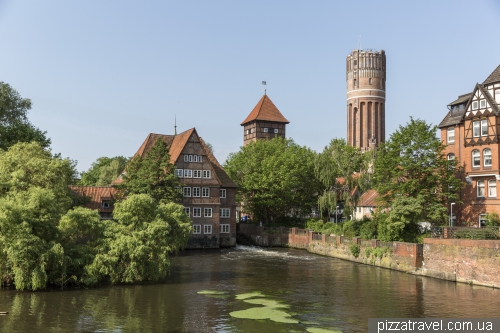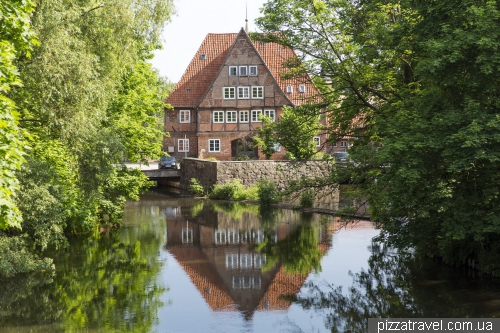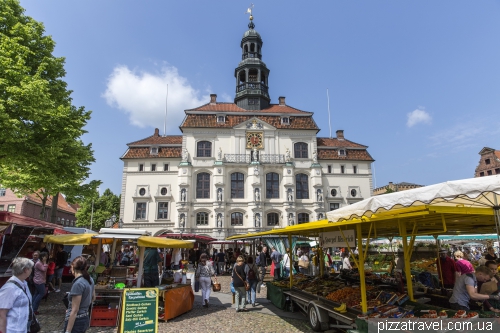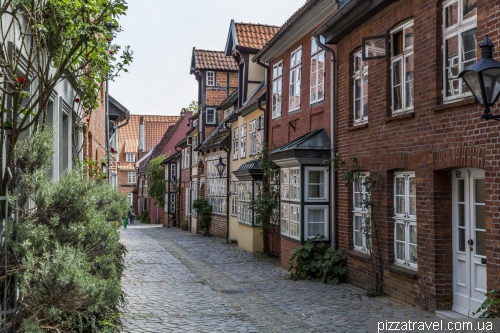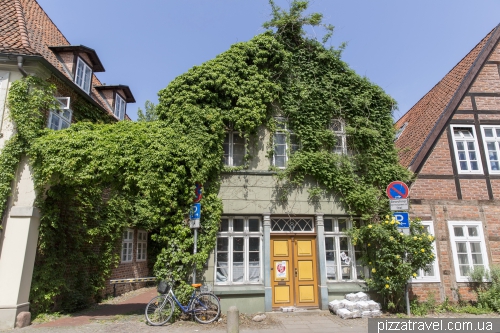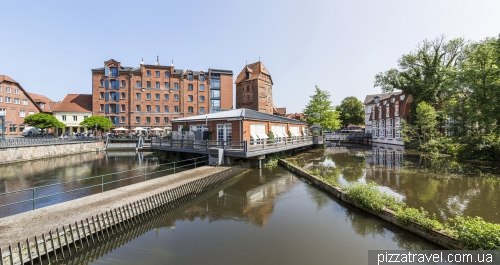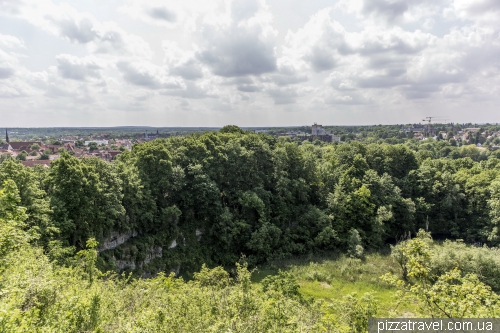Now salt is not mined and former merchants are working in the services sector, for example the concentration of restaurants and cafes in Lüneburg is the largest in Germany.
For a long time the city was the capital of the possessions of the Dukes of Braunschweig-Lüneburg. But with the transfer of the capital to Hannover, the significance of the city fell. By the way, the Dukes had Ukrainian flag :)
Upon arrival we went to the water tower. From the station, it can be reached along the beautiful streets with water channels. The round neo-Gothic tower was built in 1907.
Inside the tower is a small museum.
And on the roof is the observation deck. From above it is clearly seen that city was not destroyed during the war, as houses of various styles were preserved.
The main church of the city is the Gothic church of St. Nicholas.
The huge square of Am Sande, one of the most beautiful in Germany.
In the background the brewery of 1548, built in the Renaissance style.
Baroque Town Hall (1720) with a huge meeting hall, where the council of the Hanseatic League gathered more than 20 times.
The most touristic place in the city is the fish market Stintmarkt.
More photos of Luneburg
Another interesting place that we visited is Kalkberg. It is a mountain near the historical center of the city. Until 1371 a castle stood at the top of the mountain, at an altitude of 80 meters. Later it was destroyed and the mountain itself turned into a quarry where gypsum and building materials were mined. Now the height of the mountain is 56 meters and in its center is a huge crater.
Interesting facts: Johann Sebastian Bach studied for 2 years in the church of St. Nicholas. Also, the famous Nazi Heinrich Himmler committed suicide here.
Getting there: go by train to Lüneburg railway station, use http://www.bahn.de.

